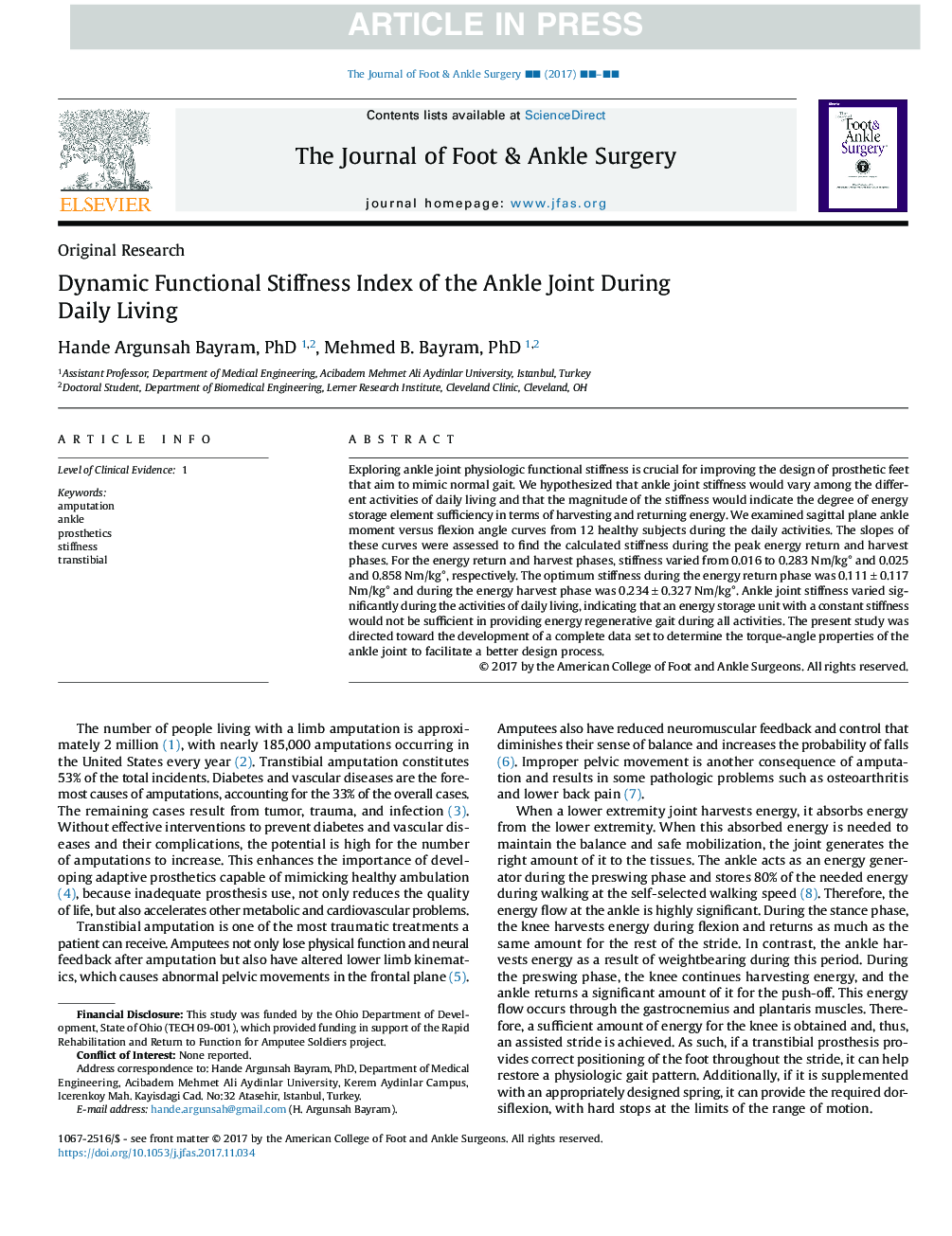| Article ID | Journal | Published Year | Pages | File Type |
|---|---|---|---|---|
| 8602821 | The Journal of Foot and Ankle Surgery | 2018 | 7 Pages |
Abstract
Exploring ankle joint physiologic functional stiffness is crucial for improving the design of prosthetic feet that aim to mimic normal gait. We hypothesized that ankle joint stiffness would vary among the different activities of daily living and that the magnitude of the stiffness would indicate the degree of energy storage element sufficiency in terms of harvesting and returning energy. We examined sagittal plane ankle moment versus flexion angle curves from 12 healthy subjects during the daily activities. The slopes of these curves were assessed to find the calculated stiffness during the peak energy return and harvest phases. For the energy return and harvest phases, stiffness varied from 0.016 to 0.283 Nm/kg° and 0.025 and 0.858 Nm/kg°, respectively. The optimum stiffness during the energy return phase was 0.111 ± 0.117 Nm/kg° and during the energy harvest phase was 0.234 ± 0.327 Nm/kg°. Ankle joint stiffness varied significantly during the activities of daily living, indicating that an energy storage unit with a constant stiffness would not be sufficient in providing energy regenerative gait during all activities. The present study was directed toward the development of a complete data set to determine the torque-angle properties of the ankle joint to facilitate a better design process.
Related Topics
Health Sciences
Medicine and Dentistry
Orthopedics, Sports Medicine and Rehabilitation
Authors
Hande PhD, Mehmed B. PhD,
